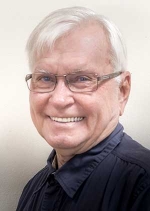|
By Anonymous — Wednesday, November 22nd, 2017
 Leslie Klinchuch, Project Manager for Chevron for the Santa Clara Valley, presents a check to the Santa Clara Elementary Principal Kari Skidmore for $1,000 to support the Music in the Classroom program with PTO President Amber McCalister and students in attendance. Photo & article courtesy Larissa Nelson. Enlarge Photo Photo & article courtesy Larissa Nelson. Chevron is continually going above and beyond to support local programs in the Fillmore community. They have a goal to be committed to contributing to the social and economic development of our communities. They believe that providing community support, both through financial assistance and personal involvement, is their responsibility as a good neighbor. Their support in serving the students that attend Santa Clara Elementary demonstrates their desire to serve others and be an integral part of the neighborhood. This year they have generously supported the Fillmore and Santa Paula students at Santa Clara Elementary school, aka the “Little Red Schoolhouse”. This program will help infuse music and culture into the lives of many youth, affirm their value, nurture their skills and talents, help them realize their artistic value, and lead them to a greater understanding and appreciation for music and art. Last week, this grant was awarded from the Chevron Environmental Management Company from Leslie Klinchuch, Project Manager for Chevron for the Santa Clara Valley, and presented to principal, Kari Skidmore for $1,000 to support the Music in the Classroom program. The community support of Chevron will help serve students K-6 by enriching their elementary education and assisting with bringing a music teacher to the classrooms to teach appreciation and understanding of music for students, teach instrument instruction to the students, assist with developing community involvement by inviting community members to participate in concert, and help with improvement of the student’s success on standardized tests based on skills learned through music. If other members of the community would like to support similar programs at the school, they can reach out to PTO Vice President Larissa Nelson at happyarissa@gmail.com |
|
By Anonymous — Wednesday, November 22nd, 2017
 A soil auger/drill was running soil tests on the vacant lot located in the 200 block of East Telegraph Road (Highway 126), at the east end of town last week. Choice Drilling Environmental/Geotechnical ran the tests. An RV park (storage and repair) is planned for the parcel. Enlarge Photo |
|
By Anonymous — Wednesday, November 22nd, 2017
 On Wednesday, November 15th at about 9:10am Fillmore Fire crews responded to a crash near the Fillmore Active Adult Center, 500 block of Santa Clara Street. A vehicle jumped the curb and struck a gas line, and by 9:45am the Fillmore Active Adult Center was evacuated, with no injuries report. And area between Olive and Central Avenue were blocked until 11am. Southern California Gas Company also responded to the incident. Enlarge Photo |
|
By Anonymous — Wednesday, November 22nd, 2017
On Saturday, November 18th at 12:52pm a micro 1.9 earthquake occurred approximately 5 miles South East of Fillmore and 7 miles South West of Piru. For more information go to http://scedc.caltech.edu/recent/Quakes/ci37814007.html |
|
By Anonymous — Wednesday, November 22nd, 2017
Board meeting highlights for the Fillmore Unified School District: Approve the Start and End Date for 2018-2019 School Calendar Approve Updated FUSD Salary Schedules Approve the Memorandum of Understanding with Ventura County Behavior Health Career Pathway and Fillmore Unified School District for 2017-2018 Personnel Recommendations |
|
By California Highway Patrol — Wednesday, November 22nd, 2017
Thanksgiving weekend, traditionally one of the busiest travel times in America, can also be one of the deadliest on the roadways. To help motorists avoid tragedies, the California Highway Patrol (CHP) will have all available officers on patrol during a Maximum Enforcement Period (MEP). The MEP begins at 6:01 p.m. on Wednesday, November 22, and continues through 11:59 p.m. on Sunday, November 26. During the MEP, CHP officers will educate motorists and enforce traffic safety laws throughout the state to ensure everyone has a safe holiday. Not wearing a seat belt can be a fatal decision in a collision. According to the CHP’s 2016 Thanksgiving MEP data, among the 27 people killed in collisions within CHP jurisdiction, 14 were not wearing a seat belt. Research shows that wearing a seat belt is one of the simplest things people can do to stay safe when traveling in a vehicle. “Whether you are driving across the street or across the country for your Thanksgiving gathering, it is imperative to wear your seat belt,” CHP Acting Commissioner Warren Stanley said. “Wearing a seat belt is essential every day of the year, but we do not want to have festivities ruined as a result of people not buckling up for their trip.” The CHP is also partnering with seven other state law enforcement agencies across the nation for the Thanksgiving weekend for the “Interstate 40 Challenge.” The annual campaign focuses on the 2,500-mile stretch of interstate that runs from North Carolina through Tennessee, Arkansas, Oklahoma, Texas, New Mexico and Arizona, ending in Barstow, Calif. The CHP will be educating and enforcing traffic safety laws during this challenge. During past challenges, California has not seen a single fatality on I-40 The mission of the California Highway Patrol is to provide the highest levels of Safety, Service, and Security. |
 Photo of the Week "Decisions... DECISIONS!" by Bob Crum. Photo data: ISO 1000, Canon EF-S 15-85 lens at 16mm, f/5.6 @ 1/60 second. Enlarge Photo By Bob Crum — Wednesday, November 22nd, 2017
Thank you!
A long, long time ago, Pilgrims gathered to give thanks for their blessings. Because it became a yearly habit, President George Washington declared the 4th Thursday of November a national holiday. Tradition prevails. Americans have been celebrating the occasion with reckless abandon ever since. So many blessings: Country, family, friends and good health most days. I am also very grateful for the Gazette publisher and all of you who faithfully read my weekly column. Were it not for y'all and photography, I might still be farming alfalfa. Thanksgiving is a photographic bonanza! It's usually a time when far-flung family members - from the newest baby to grandfather Artimis - gather to partake of the festivities. Awesome opportunity for fantastic family photos! It's also a great time to graduate from snapshots to making memorable photos for the family album. WHAT?! Photo album? What's that? Battery fully charged? Don't forget about 'composition'! Know exactly what the subject is that you are about to photograph. If it's grandfather Artimis, fill the frame with Artimis. If this means moving then move! Candid shots are generally more interesting. If you're photoing the turkey, fill the frame with just the bird! Think composition! The dining room table is always a fascinating subject. It's an opportunity to get some closeups of the table settings, decorations, the turkey etc. Prepping the meal in the kitchen always a great photo op. Two requisite photos are the family getting together at the dining table and the family group portrait. If it's a big family gathered, stand at one end of the table and shoot lengthwise. Then shoot from the other end to be sure you've included everyone. Omit Uncle Brutus and you'll hear about it forever! It's helpful to carefully stand on a chair or better, have a ladder handy for a unique perspective. Be ready when it's time to carve the bird. Stand opposite the carver. Again, fill the frame with the carver and bird. Make the subject the subject not an afterthought. Start a new trend for interesting photos. Perhaps light candles in the pumpkin pie for the kids to blow out. Caution: When it's time to dine, do not photograph people eating! Now the classic photo: The family portrait. Preferably outdoors for better light. Creatively direct people for interesting placement. When appropriate, have some kneeling in the front and stagger people of various heights. Porch steps are great. When everyone is in place, be sure that you can see every face in the viewfinder. If necessary, get everyone closer or move back. Forget cheese... have everyone say wheeee or money. Blinking eyes not allowed. Don't forget the tripod if you want to be included in the photo. Set the camera timer to 10 seconds, mash the shutter button and dash into position. Don't forget to grin! Happy Thanksgiving with many happy returns! Photo of the Week... turkeys, of course. Not promoting the brand... just the occasion. Send comments, questions or suggestions to bob@fillmoregazette.com |
|
By Anonymous — Tuesday, November 21st, 2017
With the holiday season upon us, the California Department of Public Health (CDPH) today reminded consumers about the importance of safe food preparation and storage measures to prevent foodborne illness. Bacteria can be found in foods such as meat and poultry and may cause illness if insufficiently cooked, inadequately cooled or improperly handled. Also, it is important to carefully wash fresh produce, and not allow uncooked food to come in contact with raw meat or poultry. “We can help ensure that foodborne illnesses don’t ruin our holidays, or any day, by properly preparing and handling meat, poultry and other foods,” said CDPH Director and State Public Health Officer Dr. Karen Smith. Most foodborne diseases can be prevented by: Symptoms of foodborne disease can include diarrhea, which may be bloody, vomiting, abdominal cramps and fever. Most infected people recover from foodborne illnesses within a week. Some, however, may develop complications requiring hospitalization. Young children, the elderly, pregnant women and people with weakened immune systems are at highest risk for potentially life-threatening complications. Additional information on food safety is available through the U.S. Department of Agriculture Meat and Poultry hotline at 1-888-MPHotline (1-888-674-6854). Consumers can also access the national Partnership for Food Safety Education’s “Fight BAC!” (bacteria) Web page. |
|
By Ventura County District Attorneys Office — Monday, November 20th, 2017
VENTURA, CA - District Attorney Gregory D. Totten announced today that Carlos Chavez (DOB 09/21/88), of Oxnard, and Joseph Raymond Valenzuela (DOB 11/19/78), of Santa Paula, were sentenced to two years in county jail, followed by 18 months of supervised release. Earlier this year, both Chavez and Valenzuela entered guilty pleas to felony grand theft and conspiracy, and admitted a special allegation for taking over $200,000 worth of avocados. This matter was investigated by the Ventura County Sheriff’s Office and the District Attorney’s High-Tech Task Force. Chavez and Valenzuela worked for Mission Produce at a facility in Oxnard. Between January and June of 2017, they sold large amounts of avocados from the facility for cash, then pocketed the proceeds. When sheriff’s deputies executed a search warrant on Chavez’s house, they seized approximately $143,000 in cash from a safe in his bedroom. As part of his guilty plea, Chavez agreed to forfeit the money for victim restitution. A restitution hearing is scheduled for November 29, 2017, at 8:30 a.m. in courtroom 13 of the Ventura Superior Court, County of Ventura. |
|
By Ventura County District Attorneys Office — Monday, November 20th, 2017
VENTURA, CA - District Attorney Gregory D. Totten announced today that for the seventh consecutive year, the Ventura County District Attorney’s Office was awarded a special DUI prosecution grant from the California Office of Traffic and Safety. The $413,248 grant will once again fund a vertical prosecution team that will work cases from arrest through sentencing. The vertical prosecution team is comprised of two-full time deputy district attorneys who are dedicated solely to felony alcohol and drugged DUI prevention and prosecution. This team will handle cases throughout each step of the criminal process. The team is designed to aggressively prosecute impaired drivers within Ventura County, while simultaneously raising public awareness of the fatal consequences caused by drivers under the influence of alcohol and/or drugs, both illegal and prescription. In fatal and major injury DUI vehicle collisions, members of the team may respond to the crash scene to participate in the investigation. Prosecution team members will work with the State’s Traffic Safety Resource Prosecutor Program to expand knowledge and resources in the office by obtaining and delivering specialized training, including training in the emerging problem of drug-impaired driving. Team members will share information with peers and law enforcement personnel throughout the county and across the state. The purpose of the program is to prevent impaired driving and reduce alcohol and drug-impaired traffic fatalities and injuries. According to the California Highway Patrol’s latest data, there were 20 deaths and 347 serious injuries as a result of DUI collisions in Ventura County in 2014. The number of fatalities in 2014 increased 67 percent from 2013. “When there is a trained, seasoned and committed team working serious DUI cases, prosecutors get the positive results needed,” said OTS Director Rhonda Craft. “The Office of Traffic Safety and the Ventura County District Attorney’s Office will be working together to help keep the streets and highways safe across Ventura County and the state.” The need for this program is now more critical than ever. For the last three fiscal years, we have seen a steady increase in the number of DUI drug cases filed: 103 in 2014/2015, 158 in 2015/2016, and 215 in 2016/2017. Likewise, there has been an increase in the number of felony DUI with injury cases in the last five years: 75 in 2012/2013, 99 in 2013/2014, 114 in 2014/2015, 117 in 2015/2016, and most recently, 133 filed in 2016/2017. Funding for the program comes from a grant by the California Office of Traffic Safety, through the National Highway Traffic Safety Administration. |







